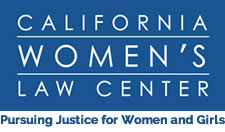Women’s Herstory Month: Change Makers

We are excited that March is here because it is Women’s History Month! Every day, but especially during this month, the California Women’s Law Center (CWLC) is proud to recognize courageous women who have shaped our past and upon whose sturdy shoulders we stand in our ongoing fight for fairness and equality.
Over the course of this month, we will highlight trailblazers you may or may not know who have played a significant role in their industry or profession and deserve acknowledgement and appreciation.
CWLC is committed to ensuring gender equity and opportunity for all. This week, we are proud to recognize change makers who have defied the odds and blazed a trail of success and empowerment in their areas of expertise.
Here’s to an inspiring Herstory Month!
Lilly Ledbetter
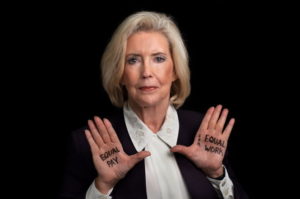
Lilly Ledbetter began working for Goodyear Tire Company in 1979. After retiring in 1998, Ms. Ledbetter brought suit against Goodyear under Title VII of the Civil Rights Act of 1964 due to the drastically unequal pay she had received compared to her male counterparts. The U.S. Supreme Court ruled against Ms. Ledbetter, finding her claim was barred by the statute of limitations because the limitation was calculated from the date the discriminatory wage decision was made, rather than the date of the most recent paycheck reflecting the wage discrimination.
Despite the defeat, Ms. Ledbetter continued to fight until the Supreme Court ruling was nullified on January 29, 2009, when President Barack Obama signed the Lilly Ledbetter Fair Pay Act. The Act ensures women like Ms. Ledbetter are able to successfully assert their pay equity claims by confirming that each discriminatory paycheck resets the 180-day statute of limitations to file a claim.
Today, Ms. Ledbetter’s fight for civil rights across the nation is more important than ever. Thank you, Lilly, for your tenacity and your sacrifice, paving the way for equal pay across the country.
Clara Shortridge Foltz
(1849 – 1934)
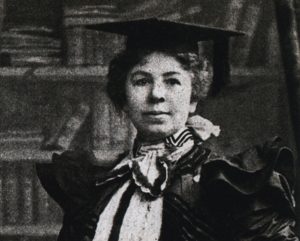 Clara Shortridge Foltz was a lecturer, suffragette, reformer, and the first woman to practice law on the west coast. Ms. Foltz was the first woman admitted to Hastings College of Law, and the first female deputy district attorney in the country. She spearheaded a national movement to create an elected office of the public defender.
Clara Shortridge Foltz was a lecturer, suffragette, reformer, and the first woman to practice law on the west coast. Ms. Foltz was the first woman admitted to Hastings College of Law, and the first female deputy district attorney in the country. She spearheaded a national movement to create an elected office of the public defender.
Born in Indiana in 1849, she grew up in Iowa during the Civil War, married at age 15 and moved to California. Determined to make a decent living after her husband left her and their five children, Ms. Foltz decided she wanted to practice law.
At the time, only white men could become a lawyer in California. This lead Ms. Foltz to author a bill changing California statute, replacing “white male citizen” with “any citizen or person.” The bill was passed by the legislature and, while awaiting signature on the last day bills could be signed by the governor, Ms. Foltz forced her way into the governor’s office and with “hat awry and hair disheveled,” convinced him to sign the bill into law.
In 1878, Ms. Foltz passed the California Bar Exam and became the first female lawyer in California.
She went on to represent indigent people which made her aware of some of the inequities in the justice system. Arguing that the right to a presumption of innocence was impossible without competent legal representation, she advocated for the establishment of the public defender system and, in 1913, the first public defender’s office opened in Los Angeles. Clara Shortridge Foltz was truly a civil rights pioneer.
Claire McCardell
(1905 – 1958)
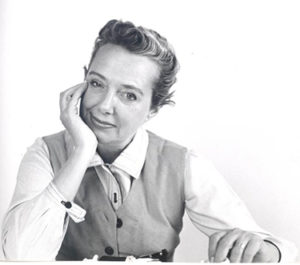 The mother of American style, Claire McCardell was the founder of American ready-to-wear fashion and became one of the first American designers to have name recognition. Ms. McCardell created and defined what is known as the American Look by reflecting the lifestyles of American women and producing functional, casual, and sophisticated clothes. We can thank Ms. McCardell for chambray shirts, cotton sundresses, well-loved ballet flats, popover dresses, and trouser pockets and pleats in women’s wear.
The mother of American style, Claire McCardell was the founder of American ready-to-wear fashion and became one of the first American designers to have name recognition. Ms. McCardell created and defined what is known as the American Look by reflecting the lifestyles of American women and producing functional, casual, and sophisticated clothes. We can thank Ms. McCardell for chambray shirts, cotton sundresses, well-loved ballet flats, popover dresses, and trouser pockets and pleats in women’s wear.
Born in Maryland in 1905, Ms. McCardell moved to New York at an early age to study fashion. In 1923, she graduated from Parsons, a fine arts school based in New York and Paris, with a certificate in costume design, and in 1929, she landed her first job in the fashion industry as the assistant to designer Robert Turk. In 1932, she was promoted to head designer at Townley Frocks and a few years later Ms. McCardell was asked to take the position of head designer with one condition: she wanted her name on the label. From 1941, until her death in 1958, she designed clothes under the “Claire McCardell Clothes by Townley” label.
Evidence of Claire McCardell’s vision and fashion sensibility remain today and can be seen in the contemporary styles women love to wear.
Julia Morgan
(1872 – 1957)
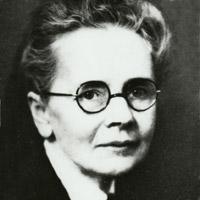 Born in San Francisco in 1872, Julia Morgan became the first licensed architect in California. Ms. Morgan graduated from the University of California Berkeley with a degree in civil engineering and, after initially being refused admission because of her gender, she eventually was accepted into an architecture program in Paris.
Born in San Francisco in 1872, Julia Morgan became the first licensed architect in California. Ms. Morgan graduated from the University of California Berkeley with a degree in civil engineering and, after initially being refused admission because of her gender, she eventually was accepted into an architecture program in Paris.
Ms. Morgan designed more than 700 buildings throughout California, including Hearst Castle in San Simeon. She also designed buildings for institutions that served women and girls including Young Women’s Christian Association (YWCA) and buildings for Mills College, the liberal arts women’s college in Oakland.
Thank you, Julia, for your perseverance as your legacy lives on in the strength and beauty of the buildings you created throughout California.
“The most effective way to do it, is to do it.”
-Amelia Earhart
Thank you for joining CWLC in celebration of the amazing women who have helped shape our country and the great state of California.
To learn more about Women’s Herstory Month, and other women who have contributed to women’s herstory, click here.
